Abstract
1. The Na, K and water content of stools, and of gut contents removed from the terminal ileum, caecum and colon were determined in normal and Na-depleted rats and the p.d. across the colon wall measured at the site of removal of each specimen.
2. During passage through the caecum and colon, especially the ascending segment of colon, the faecal Na and water content fell considerably, K content being unchanged in the normal rats and falling in the Na-depleted. Na concentration of the faecal water fell but K concentration rose owing to water absorption.
3. Feeding normal rats with a sulphonated polystyrene resin caused a considerable Na loss in the stool, the ratio Na/(Na+K) being consistently greater than in rats not taking resin. Resin induced little Na but much K loss in Na-depleted rats.
4. The electrical p.d. across the colon wall varied little over the length of the caecum and colon in normal rats, rarely exceeding 20 mV, the serosa being +ve with respect to lumen. Potential difference measurements were greater in Na-depleted rats, and those of the caecum and descending colon were consistently higher than those of the ascending colon. There was a similar pattern in resin-fed rats but potentials tended to be higher.
5. K concentration of the gut contents was always greater than could be accounted for if K were passively distributed across the colonic mucosa.
6. It was concluded that: (i) active Na absorption was stimulated by Na depletion; (ii) K was probably actively transported into the colon lumen, and when unabsorbable anions were present in the gut K secretion was critically important in Na absorption; (iii) the elevation of p.d. associated with Na depletion was probably associated with the stimulated Na transport.
Full text
PDF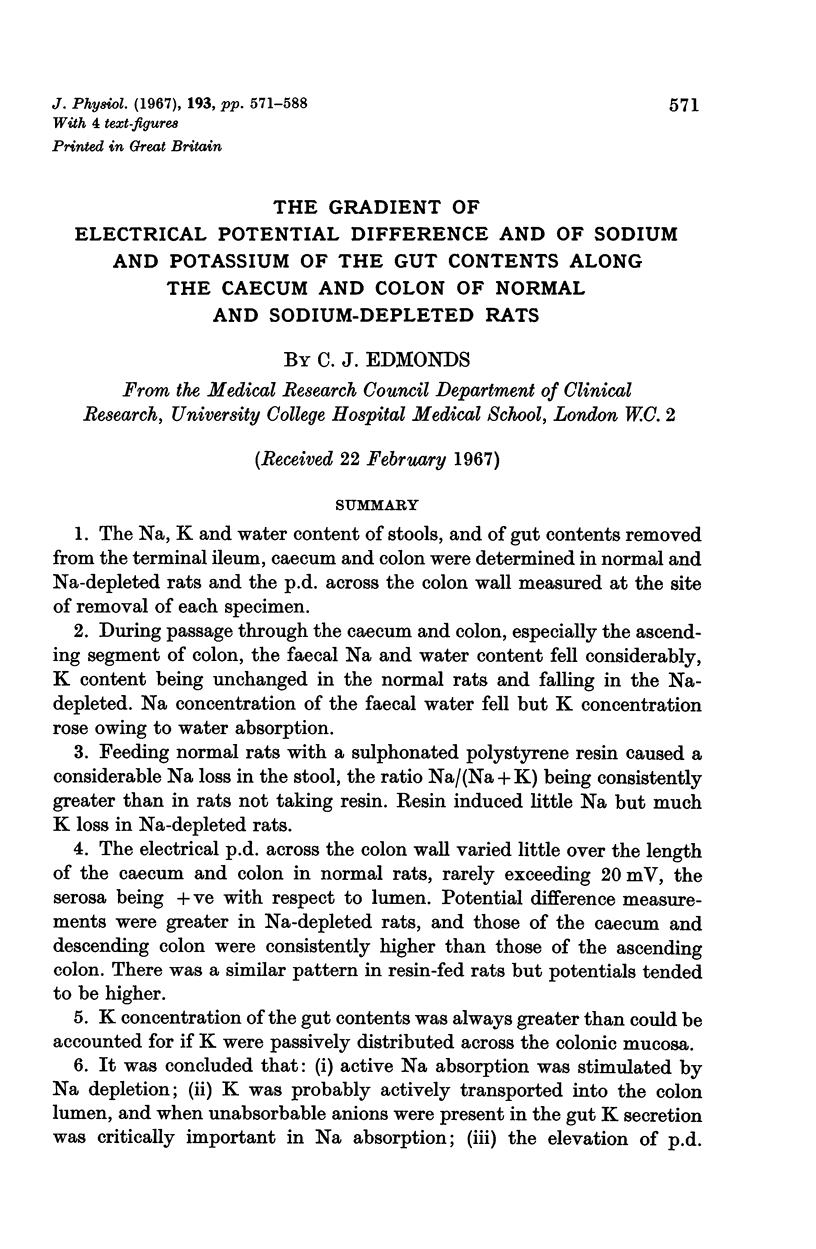
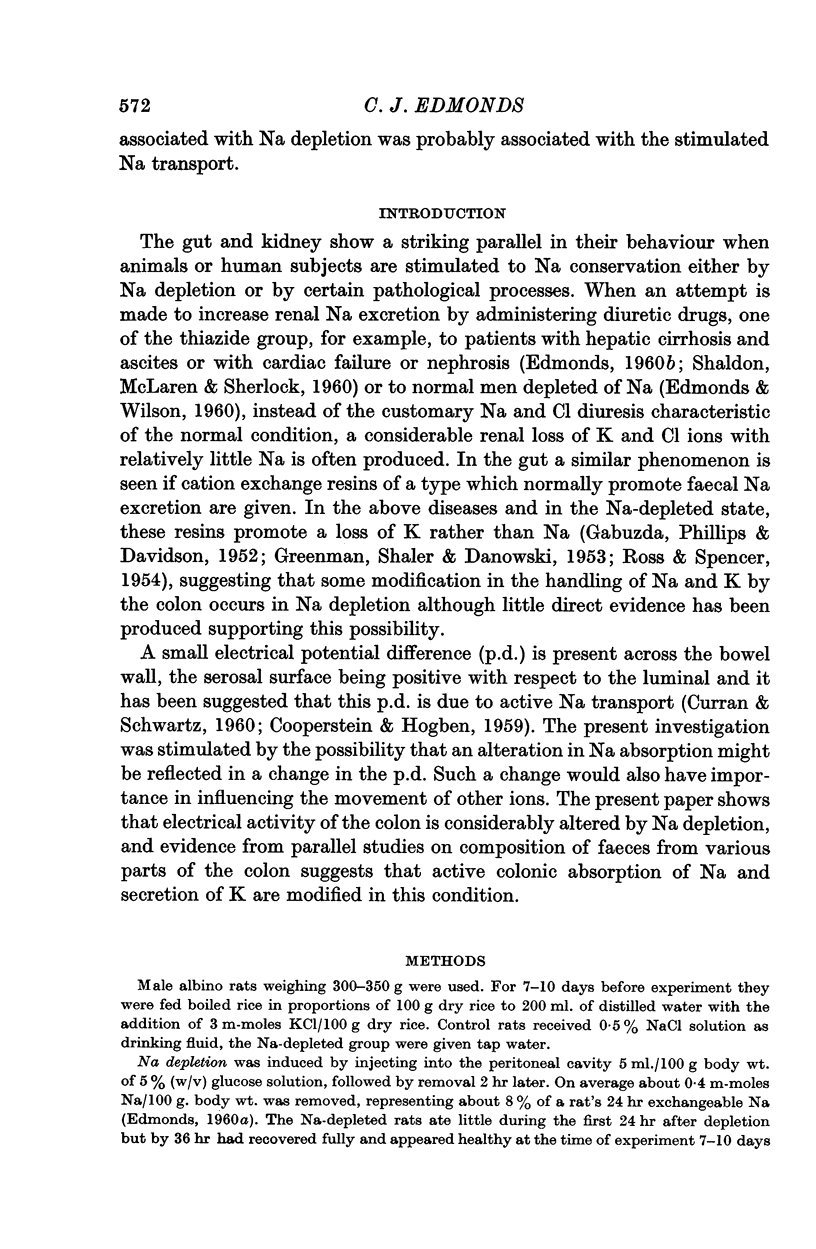
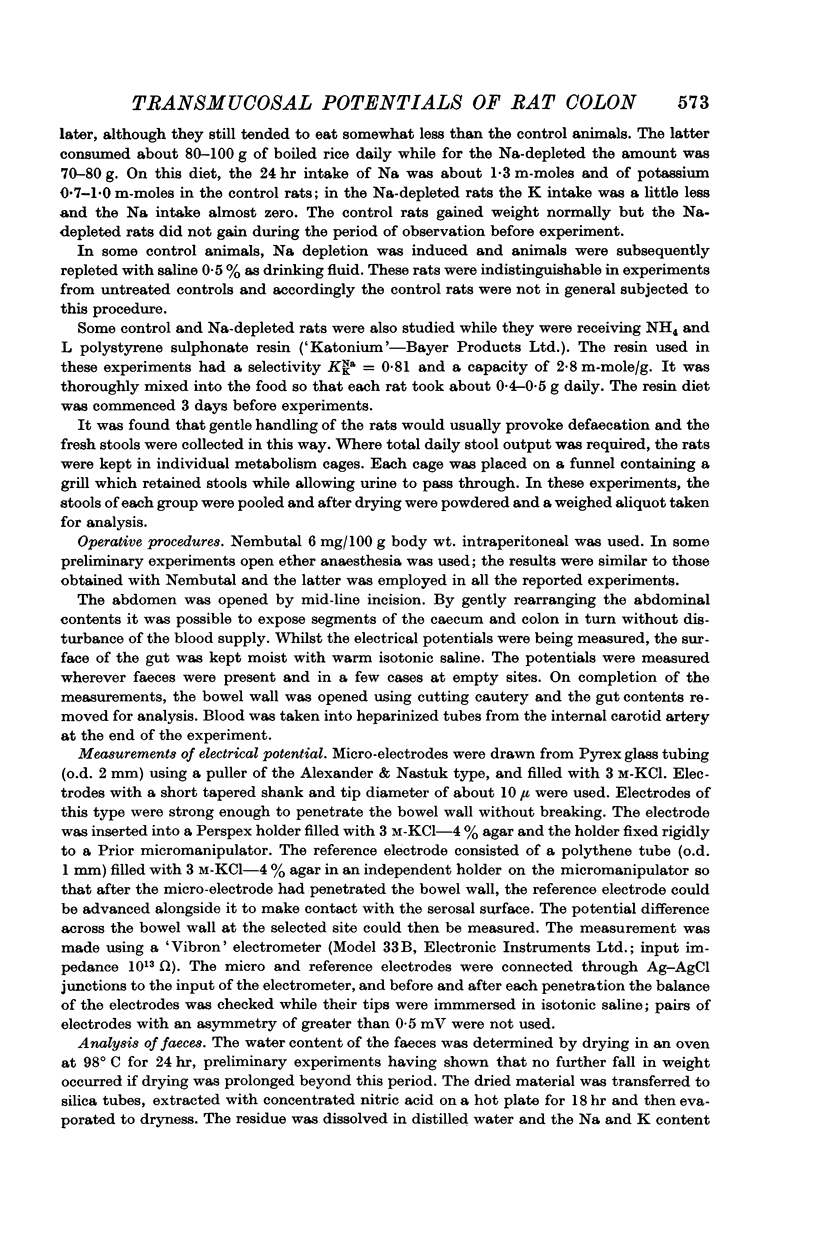
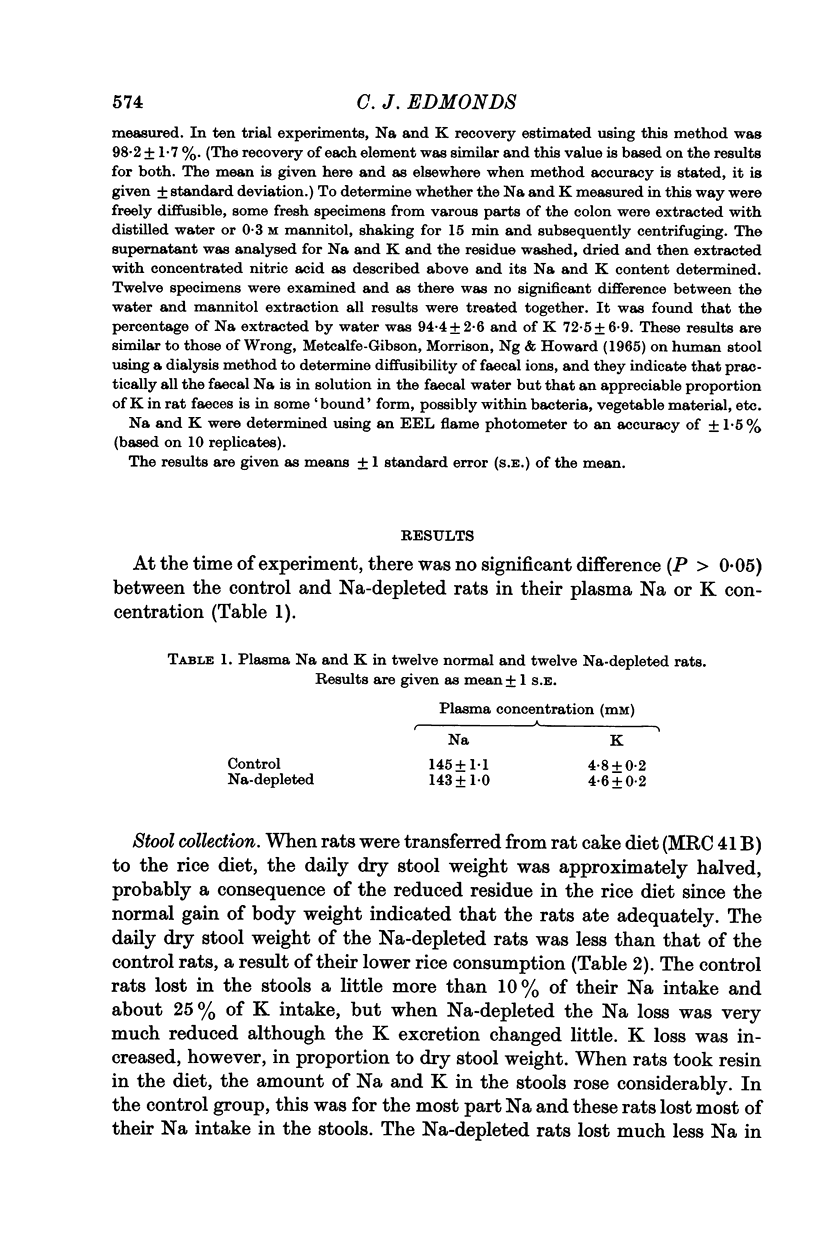
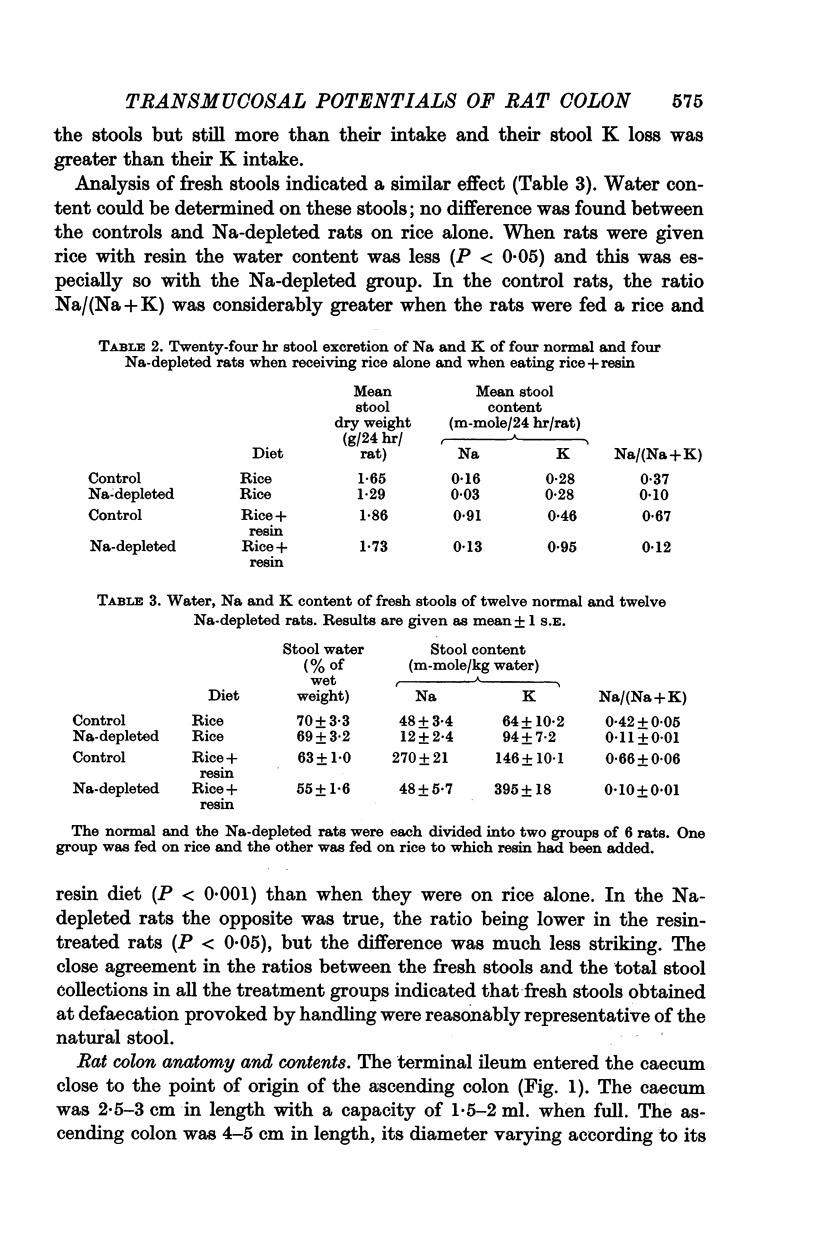
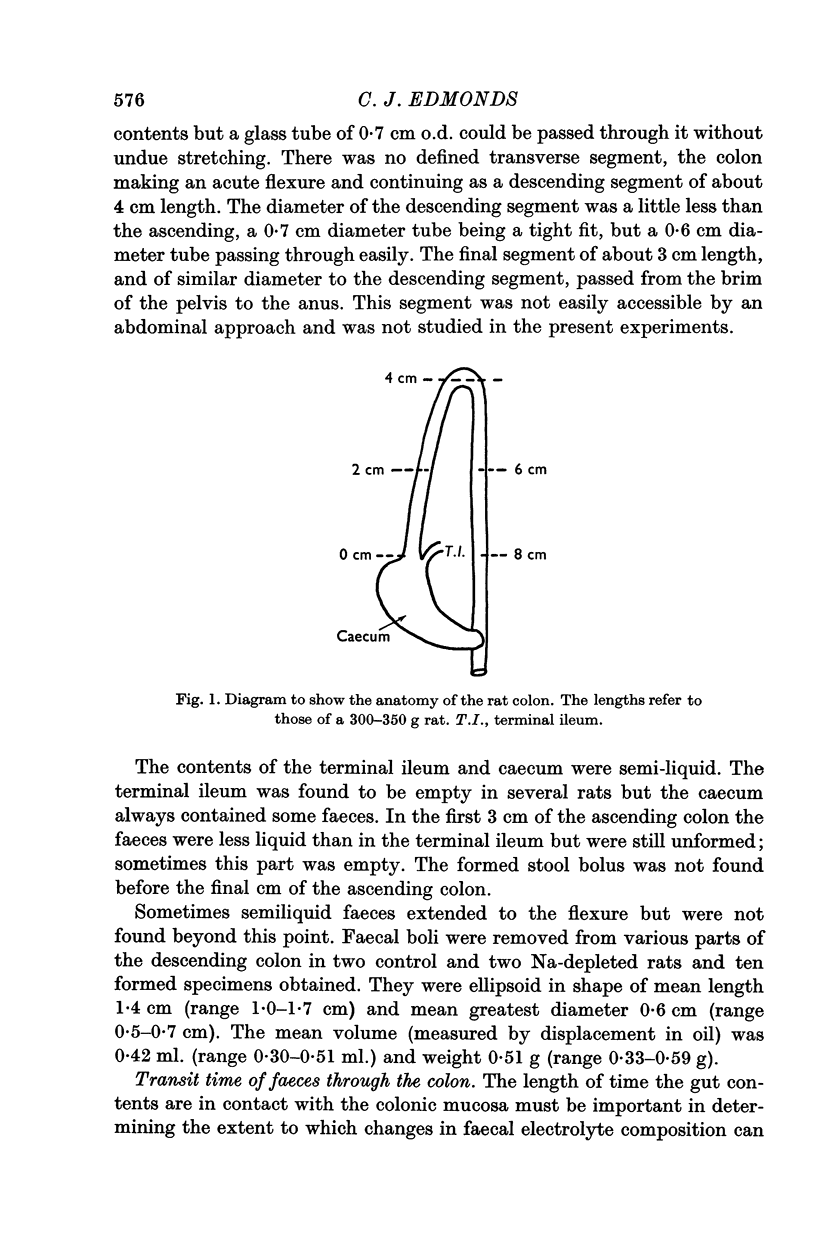
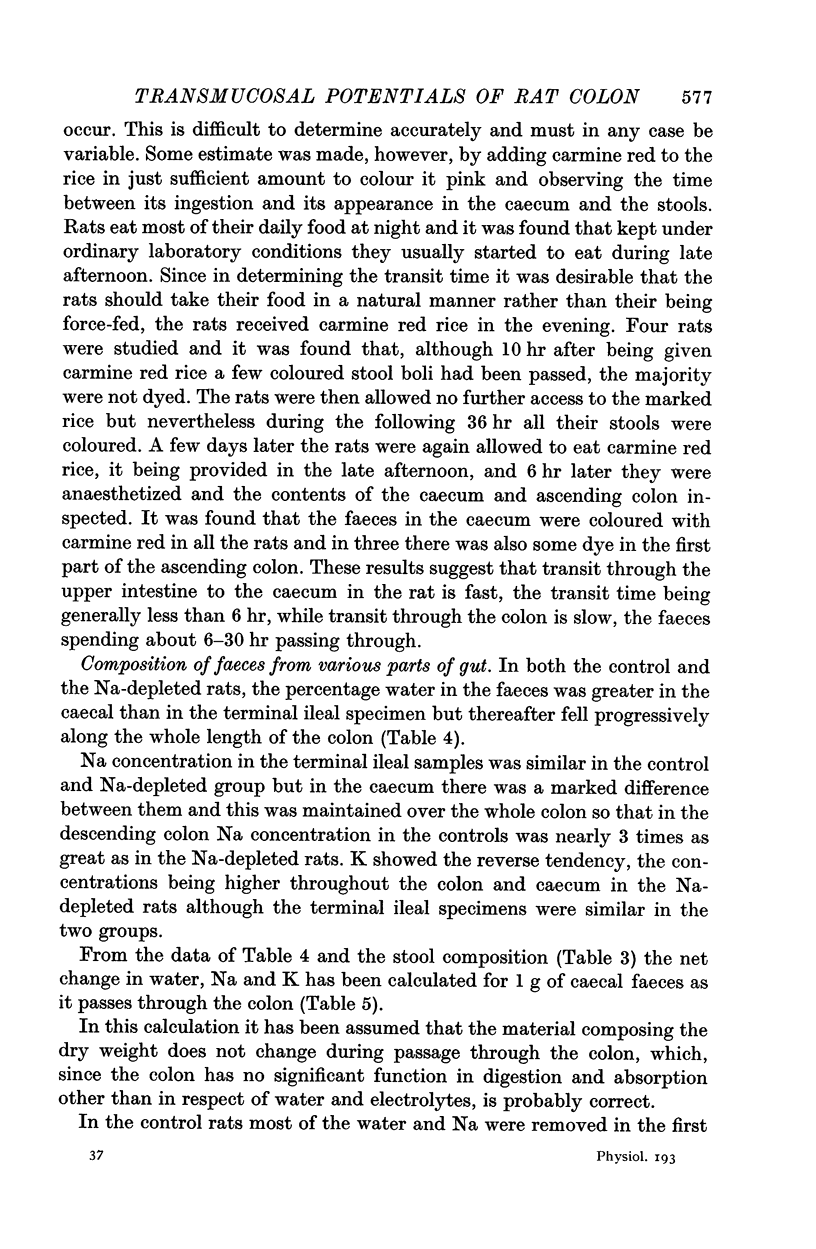
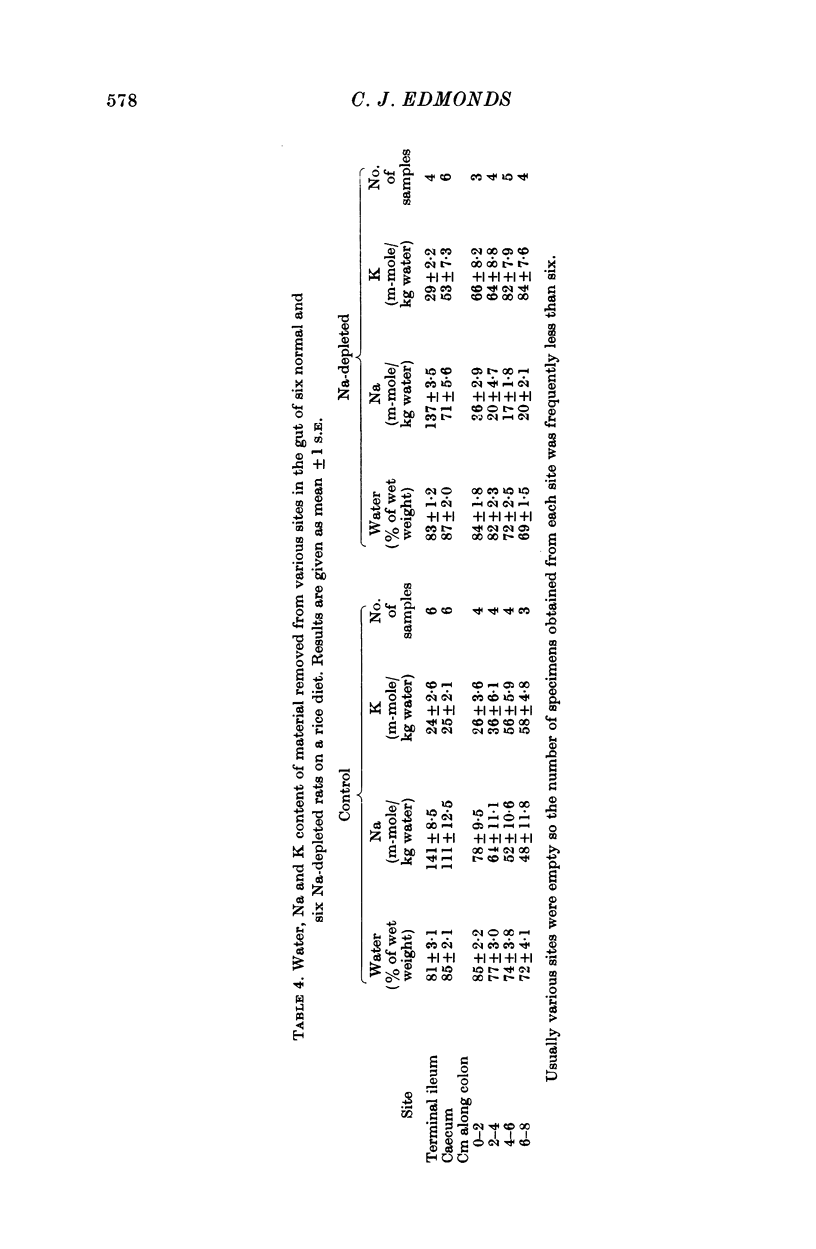
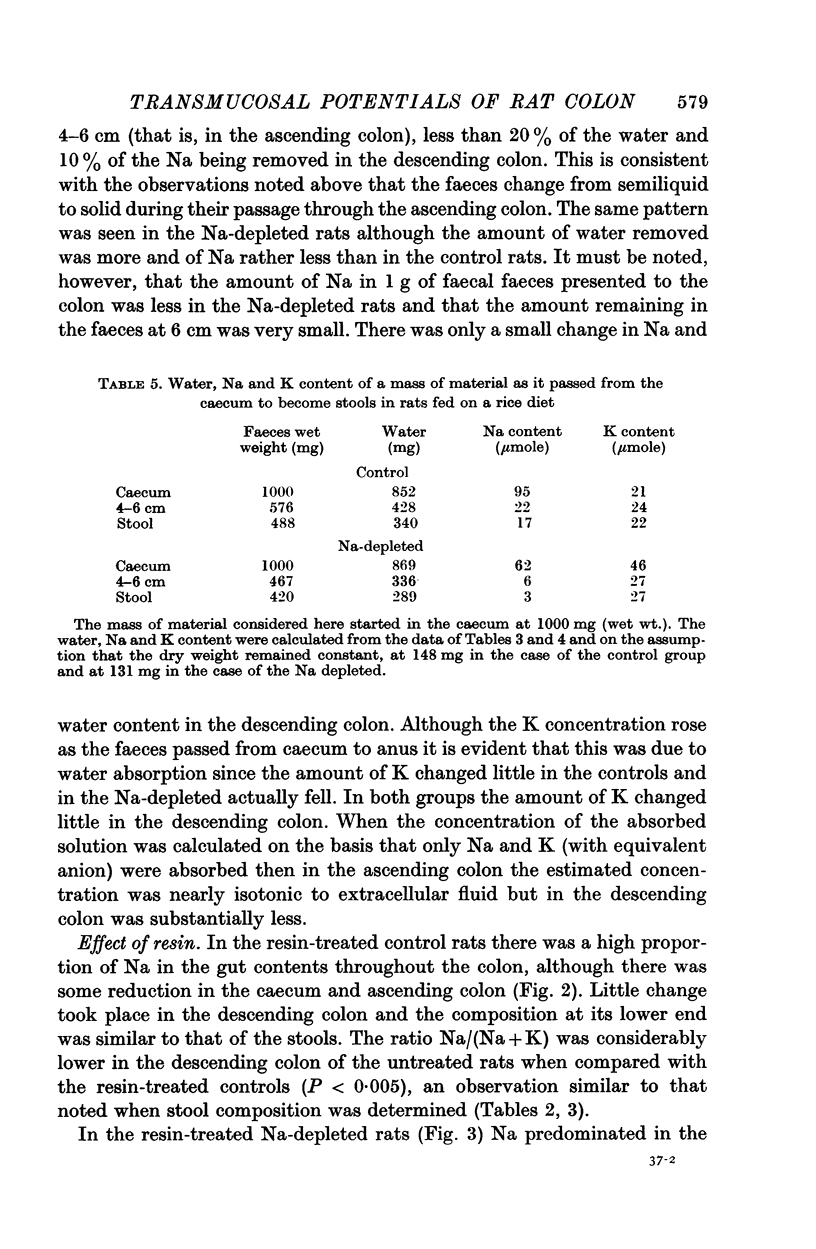
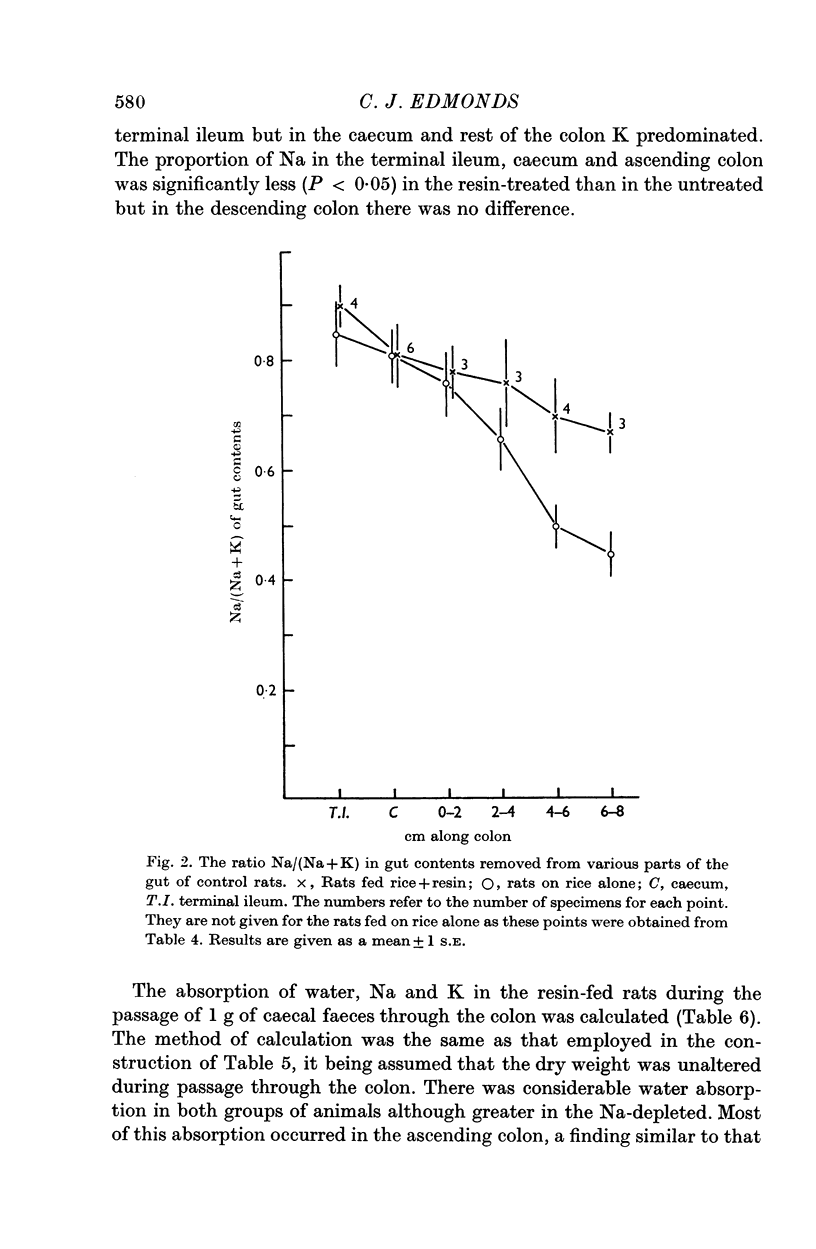
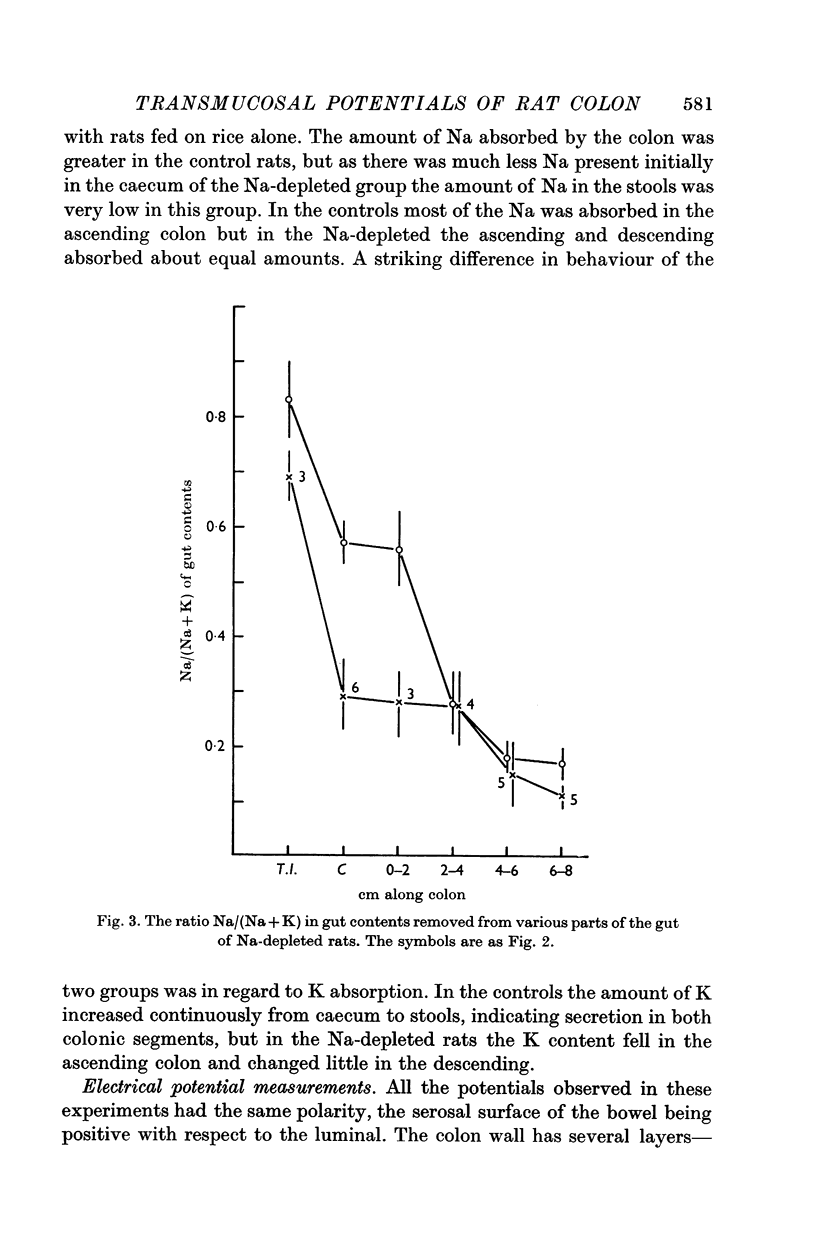
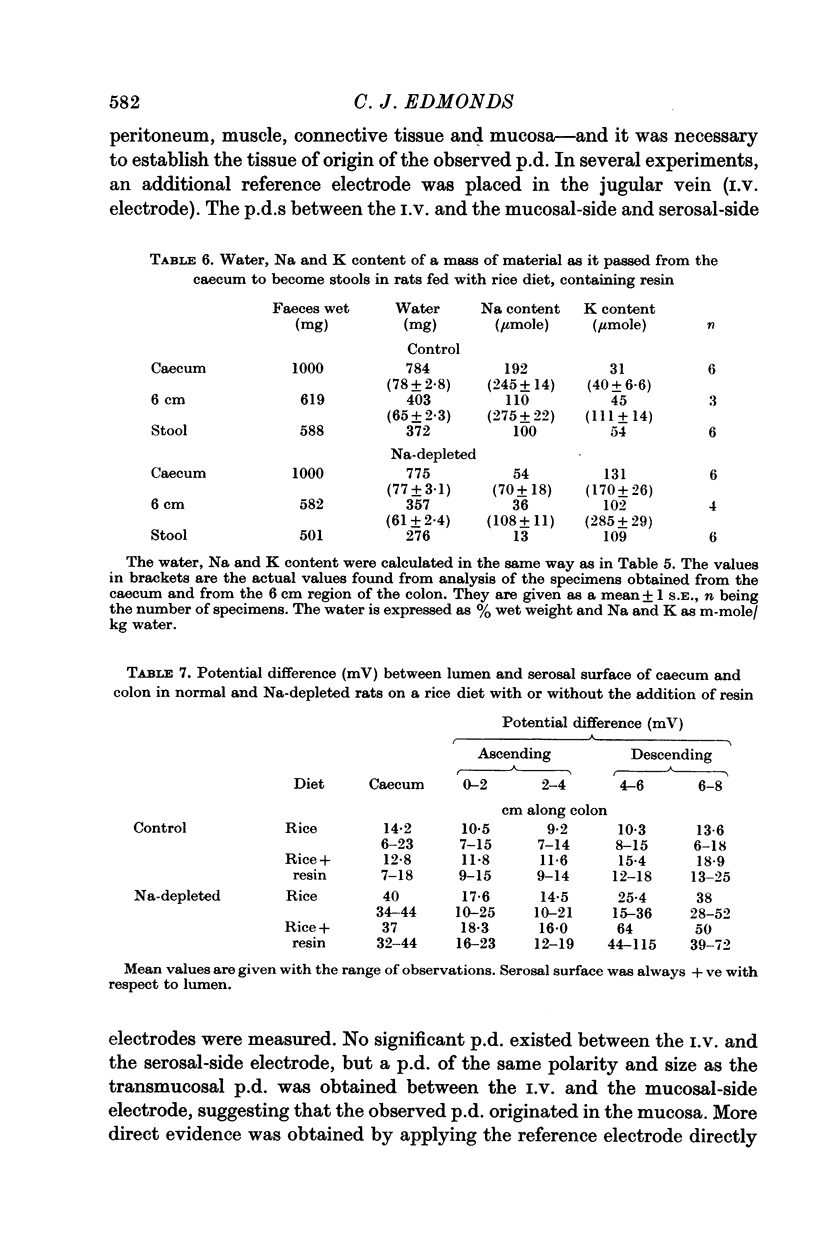
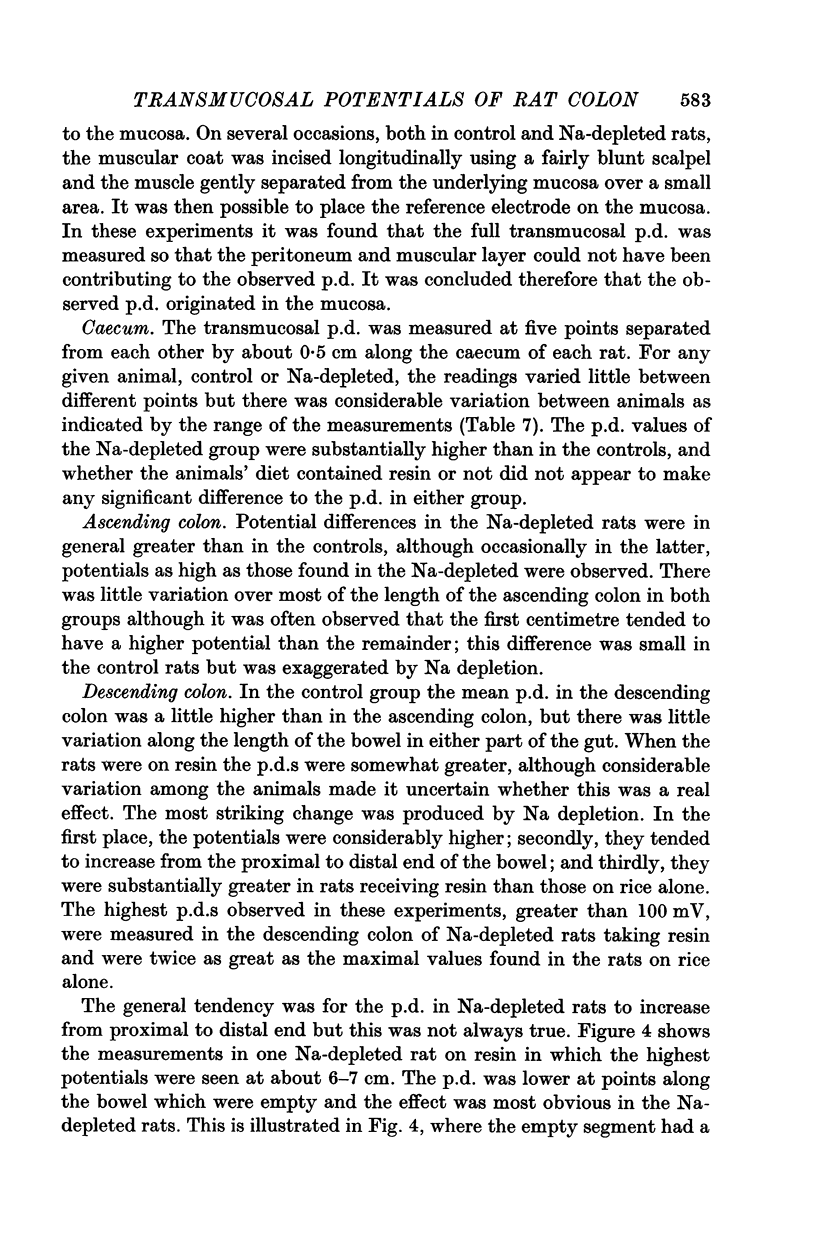
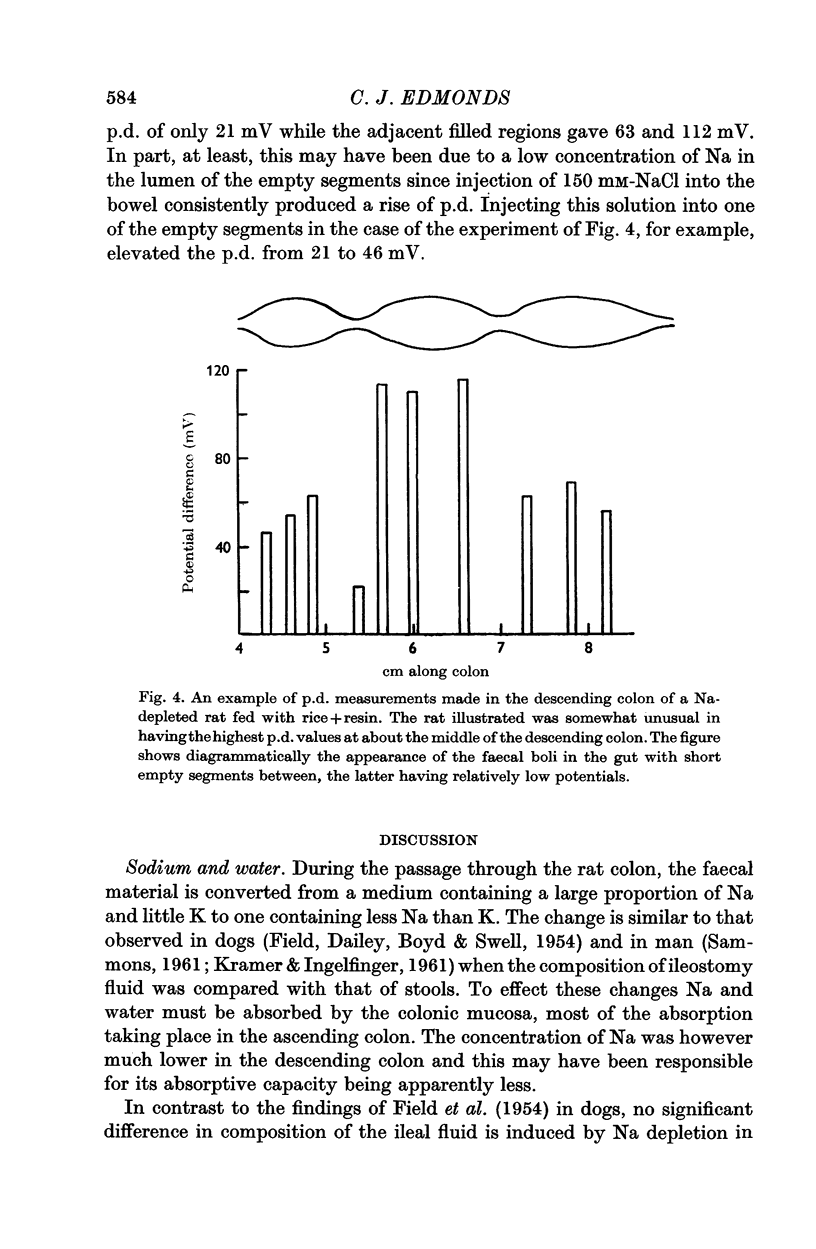
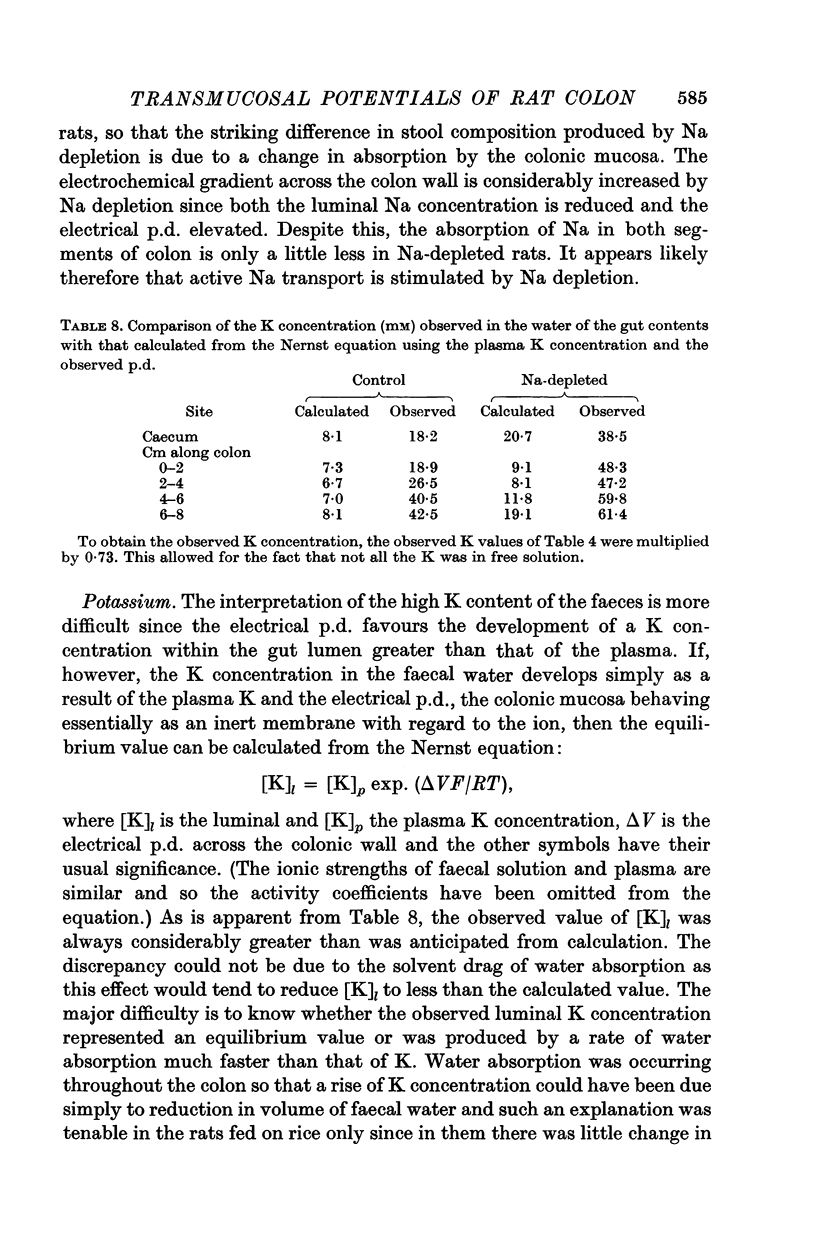
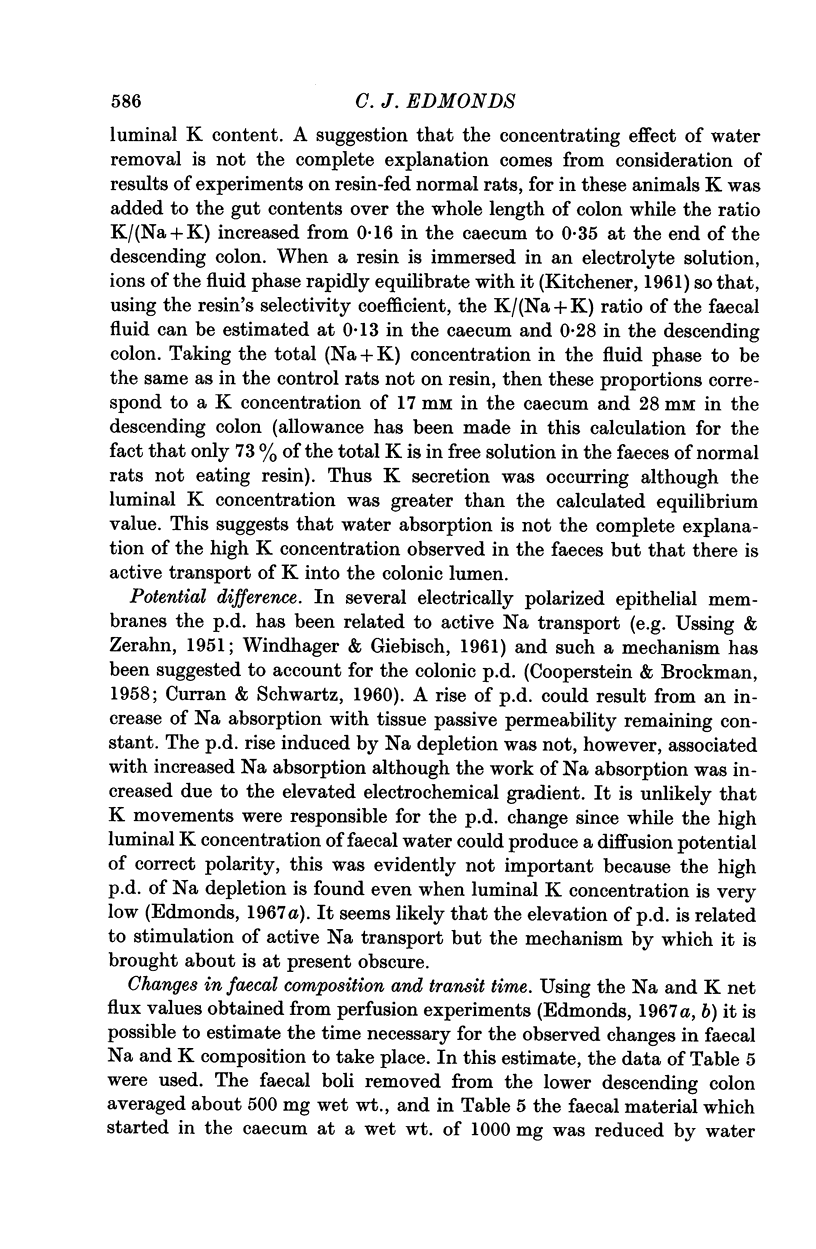
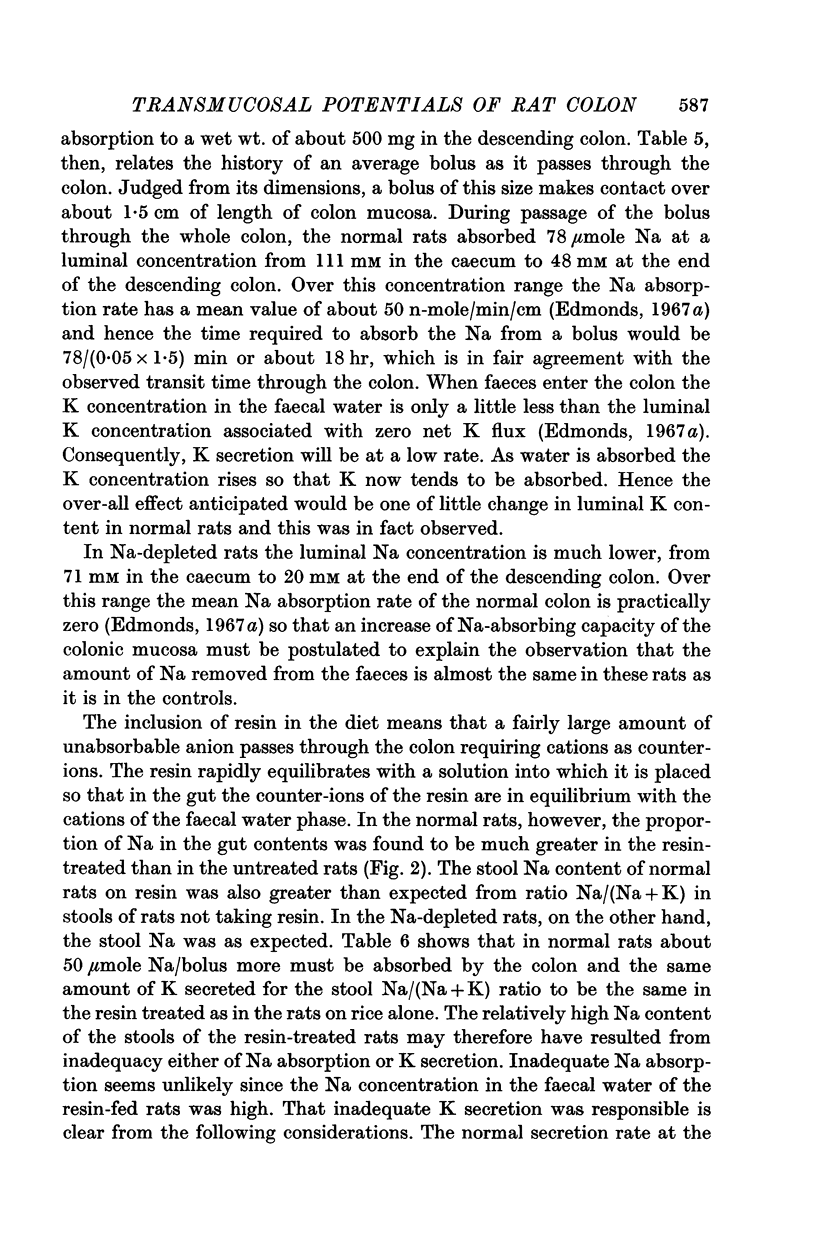
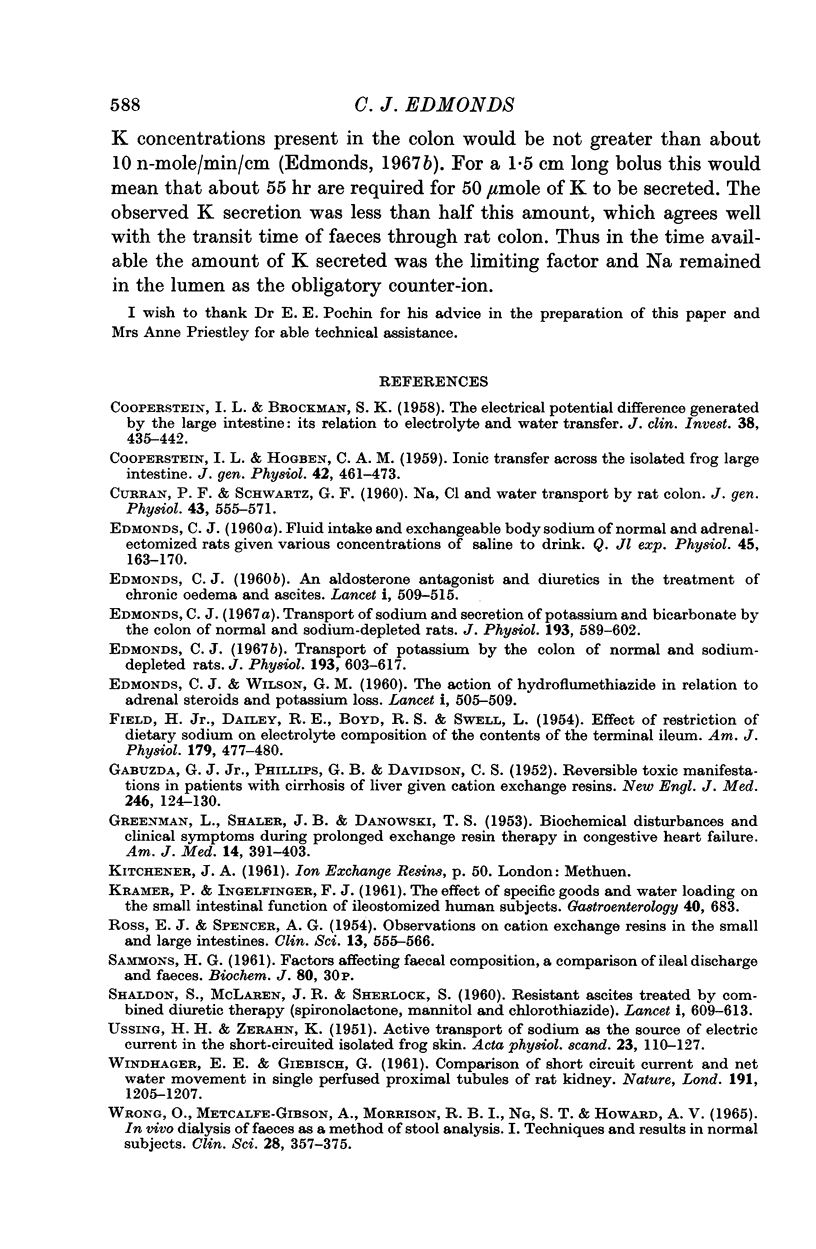
Selected References
These references are in PubMed. This may not be the complete list of references from this article.
- COOPERSTEIN I. L., BROCKMAN S. K. The electrical potential difference generated by the large intestine: its relation to electrolyte and water transfer. J Clin Invest. 1959 Feb;38(2):435–442. doi: 10.1172/JCI103818. [DOI] [PMC free article] [PubMed] [Google Scholar]
- COOPERSTEIN I. L., HOGBEN C. A. Ionic transfer across the isolated frog large intestine. J Gen Physiol. 1959 Jan 20;42(3):461–473. doi: 10.1085/jgp.42.3.461. [DOI] [PMC free article] [PubMed] [Google Scholar]
- CURRAN P. F., SCHWARTZ G. F. Na, Cl, and water transport by rat colon. J Gen Physiol. 1960 Jan;43:555–571. doi: 10.1085/jgp.43.3.555. [DOI] [PMC free article] [PubMed] [Google Scholar]
- EDMONDS C. J. An aldosterone antagonist and diuretics in the treatment of chronic oedema and ascites. Lancet. 1960 Mar 5;1(7123):509–515. doi: 10.1016/s0140-6736(60)90448-7. [DOI] [PubMed] [Google Scholar]
- EDMONDS C. J. Fluid intake and exchangeable body sodium of normal and adrenalectomized rats given various concentrations of saline to drink. Q J Exp Physiol Cogn Med Sci. 1960 Apr;45:163–170. doi: 10.1113/expphysiol.1960.sp001454. [DOI] [PubMed] [Google Scholar]
- EDMONDS C. J., WILSON G. M. The action of hydroflumethiazide in relation to adrenal steroids and potassium loss. Lancet. 1960 Mar 5;1(7123):505–509. doi: 10.1016/s0140-6736(60)90447-5. [DOI] [PubMed] [Google Scholar]
- Edmonds C. J. Transport of potassium by the colon of normal and sodium-depleted rats. J Physiol. 1967 Dec;193(3):603–617. doi: 10.1113/jphysiol.1967.sp008381. [DOI] [PMC free article] [PubMed] [Google Scholar]
- Edmonds C. J. Transport of sodium and secretion of potassium and bicarbonate by the colon of normal and sodium-depleted rats. J Physiol. 1967 Dec;193(3):589–602. doi: 10.1113/jphysiol.1967.sp008380. [DOI] [PMC free article] [PubMed] [Google Scholar]
- FIELD H., Jr, DAILEY R. E., BOYD R. S., SWELL L. Effect of restriction of dietary sodium on electrolyte composition of the contents of the terminal ileum. Am J Physiol. 1954 Dec;179(3):477–480. doi: 10.1152/ajplegacy.1954.179.3.477. [DOI] [PubMed] [Google Scholar]
- GABUZDA G. J., Jr, PHILLIPS G. B., DAVIDSON C. S. Reversible toxic manifestations in patients with cirrhosis of the liver given cation-exchange resins. N Engl J Med. 1952 Jan 24;246(4):124–130. doi: 10.1056/NEJM195201242460402. [DOI] [PubMed] [Google Scholar]
- GREENMAN L., SHALER J. B., DANOWSKI T. S. Biochemical disturbances and clinical symptoms during prolonged exchange resin therapy in congestive heart failure. Am J Med. 1953 Apr;14(4):391–403. doi: 10.1016/0002-9343(53)90196-x. [DOI] [PubMed] [Google Scholar]
- ROSS E. J., SPENCER A. G. Observations on cation exchange resins in the small and large intestines. Clin Sci. 1954 Nov;13(4):555–566. [PubMed] [Google Scholar]
- SHALDON S., McLAREN J. R., SHERLOCK S. Resistant ascites treated by combined diuretic therapy (spironolactone, mannitol, and chlorothiazide). Lancet. 1960 Mar 19;1(7125):609–613. doi: 10.1016/s0140-6736(60)90500-6. [DOI] [PubMed] [Google Scholar]
- USSING H. H., ZERAHN K. Active transport of sodium as the source of electric current in the short-circuited isolated frog skin. Acta Physiol Scand. 1951 Aug 25;23(2-3):110–127. doi: 10.1111/j.1748-1716.1951.tb00800.x. [DOI] [PubMed] [Google Scholar]
- WINDHAGER E. E., GIEBISCH G. Comparison of short-circuit current and net water movement in single perfused proximal tubules of rat kidneys. Nature. 1961 Sep 16;191:1205–1207. doi: 10.1038/1911205a0. [DOI] [PubMed] [Google Scholar]
- WRONG O., METCALFE-GIBSON A., MORRISON R. B., NG S. T., HOWARD A. V. IN VIVO DIALYSIS OF FAECES AS A METHOD OF STOOL ANALYSIS. I. TECHNIQUE AND RESULTS IN NORMAL SUBJECTS. Clin Sci. 1965 Apr;28:357–375. [PubMed] [Google Scholar]


